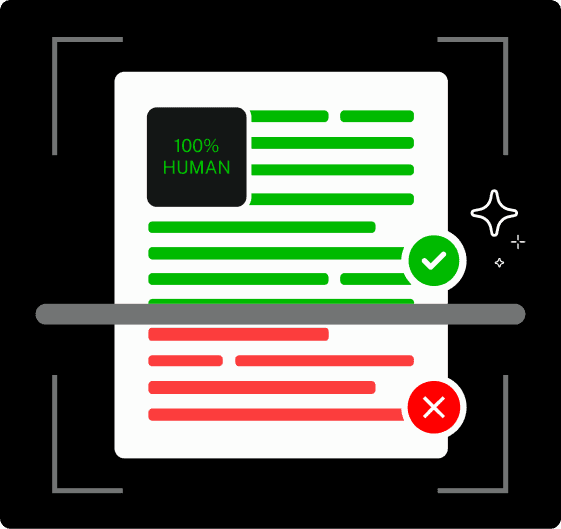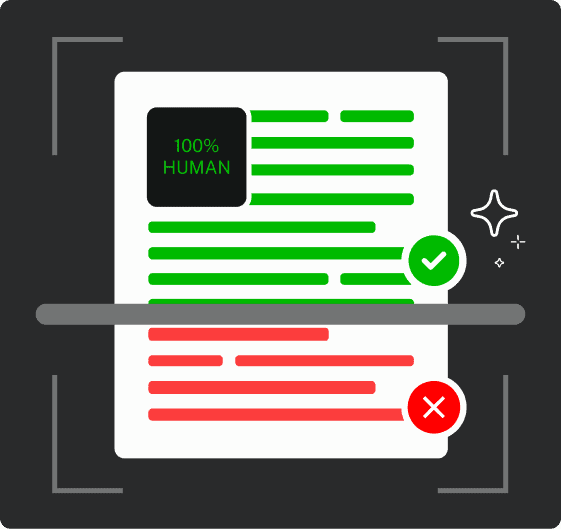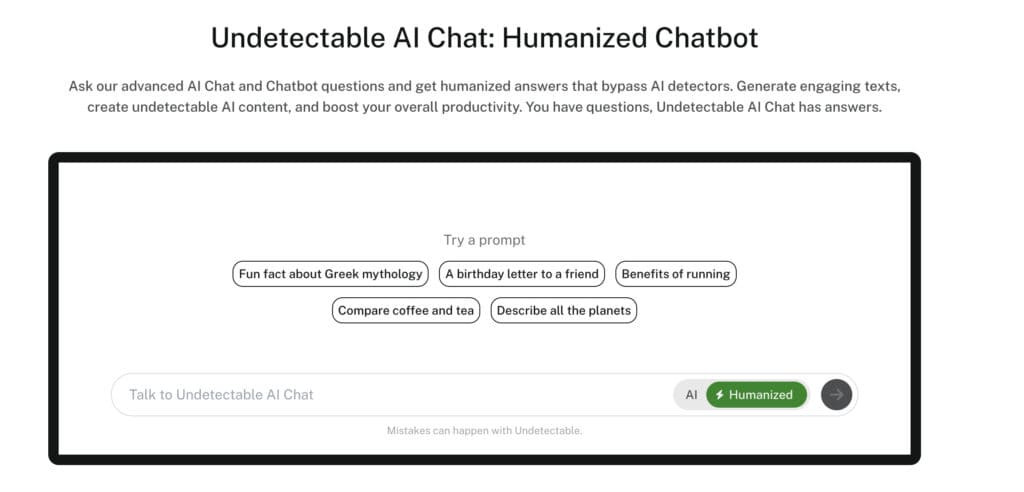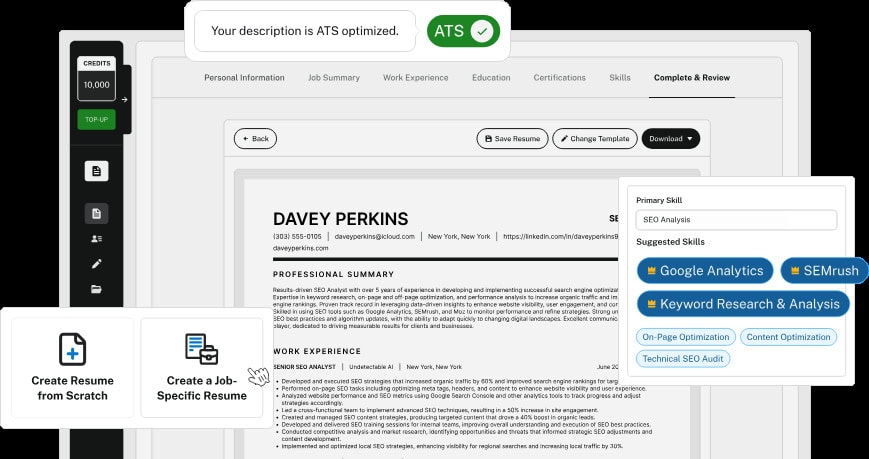When a high school graduation is on the horizon, it’s a huge deal.
You might be feeling mixed emotions—happiness and excitement for completing this major stage of your academic life and anxiety because of upcoming university admission requirements and deadlines.
To prepare for this rollercoaster, the first thing you need to learn is how to write a college resume.
After all, this black-and-white document could make or break your college dreams.
But you don’t have to push the panic button yet. In this guide, we’ll go through the steps on how to craft a college resume, tools to use, and some examples.
These tips are also useful for internships and first-time job hunters—basically anyone with little to zero experience.
How to Write a College Resume Step-by-Step
A well-structured college resume is essential for college admissions, internships, and first-time job applications.
This section breaks the process into simple steps, so you’ll end up with a polished and professional resume that highlights academic achievements, extracurricular involvement, and relevant skills.
Step 1: Choose the Right Resume Format
Your resume format determines how effectively accomplishments are presented. For students applying to college, internships, or entry-level jobs, the reverse-chronological format is the most effective.


Never Worry About AI Detecting Your Texts Again. Undetectable AI Can Help You:
- Make your AI assisted writing appear human-like.
- Bypass all major AI detection tools with just one click.
- Use AI safely and confidently in school and work.
This structure puts your most recent academic achievements, leadership roles, and work experience at the forefront, ensuring admissions officers and hiring managers quickly see the most relevant qualifications.
A well-organized resume should be clear, concise, and tailored to the application’s purpose, emphasizing strengths such as academic performance, extracurricular activities, volunteer work, and relevant coursework.
Step 2: Add Your Contact Information
This next section may seem straightforward, but missing details or unprofessional formatting can leave a negative impression.
A properly structured contact section should include:
- Full Name – Have it match official application documents.
- Professional Email Address – Avoid informal email addresses and use one with a name-based format (e.g., firstname.lastname@email.com).
- Phone Number – Provide a reliable contact number.
- LinkedIn Profile – Recommended for students with relevant projects, leadership roles, or internship experience.
- Location – City and state are sufficient, but a full address is unnecessary.
For students transitioning from high school to college or applying for their first job, creating a professional email address and keeping all contact details accurate can help you avoid any missed opportunities.
Step 3: Write a Strong Resume Summary or Objective
Now, this part is prime real estate—it’s the first thing anyone reading your resume will see.
A weak summary? Immediate yawn. A strong one? It sets the stage for everything that follows.
Here’s the deal:
- Resume summaries work best if there’s something to highlight—internships, leadership roles, or specific skills.
- Resume objectives are for those still building experience, focusing on what they bring to the table and their goals.
Either way, it needs to be short, sharp, and packed with value—no fluff, no generic “hardworking student looking for opportunities” nonsense.
Now, the secret: Instead of wrestling with wording, Undetectable AI’s Chat can generate a polished, natural-sounding summary in seconds.
Just feed it your key details—GPA, skills, experience—and it’ll draft options that actually sound like you (and not a robot). Try it here: Undetectable AI Chat.

Step 4: Highlight Your Education and Academic Achievements
For college resumes, education is the main event, so this section needs to be sharp. List school name, graduation year, GPA (if it’s solid), and any honors or AP/IB courses.
If applicable, add dual enrollment, research projects, or independent studies—anything that makes your academic profile stand out.
Got academic awards, scholarships, or impressive test scores? Drop them here.
Dean’s List? Honor roll? A national-level math competition win? Flex it.
This section should immediately tell admissions officers or recruiters that you’re serious about your education.
Step 5: List Relevant Work Experience (Even If You Have None)
Most first-time job hunters and college applicants don’t have extensive professional experience, and that’s okay.
The key is showcasing responsibilities and achievements from any experience you do have, even if it wasn’t a formal job.
Internships, part-time jobs, tutoring, babysitting, freelance work, and even major school projects that mimic real-world tasks all count.
Instead of saying, “Worked at a café,” describe the skills gained: “Managed customer interactions, handled cash transactions, and maintained efficiency in a high-paced environment.”
If you’re applying for an internship in a specific field, try connecting past experiences to relevant skills—even if they’re not directly related.
Employers and admissions officers want to see initiative and problem-solving, not just job titles.
Step 6: Showcase Extracurricular Activities and Leadership Roles
College admissions officers and recruiters look for students who do more than just attend class.
Whether it’s clubs, sports, music, debate, student government, or creative projects, this section shows commitment, teamwork, and leadership.
- Held a leadership role? That goes first.
- Organized a major event or competition? Make it clear what your role was.
- Stayed active in an organization for multiple years? That demonstrates consistency and dedication.
Instead of just listing “Student Council Member,” specify “Elected Treasurer, managed a $5,000 budget, and organized three fundraising events.”
Concrete details make a huge difference.
Step 7: Include Skills, Certifications, and Achievements
Your skills section is extra firepower, especially for internships and first-time jobs.
Highlight technical skills, certifications, and specialized knowledge that show you’re ready for the role.
If you’re applying for a business or marketing internship, mention skills in data analysis, Excel, social media management, or graphic design.
If it’s a STEM field, coding languages, lab skills, or research tools should be here. Foreign language proficiency is also a major plus.
Certifications—like Google Analytics, CPR, Microsoft Office, or Adobe Creative Suite—prove real-world competencies.
Avoid generic phrases like “hardworking” or “good communicator” unless they’re backed by actual achievements.
Step 8: Add Volunteer Work and Community Involvement
Volunteering isn’t just about filling space—it shows initiative, leadership, and a sense of responsibility.
Colleges and recruiters love to see applicants who engage with their communities.
If you’ve organized fundraisers, mentored younger students, worked on environmental projects, or participated in nonprofit efforts, describe what you actually did and the impact it had.
“Volunteered at a food bank” is weak. “Led a weekly food drive, distributing meals to 200+ families” carries weight.
Even one-time events can be worth mentioning if they demonstrate leadership or teamwork.
Step 9: Tailor Your Resume for College Applications or Internships
A generic resume won’t stand out. Colleges want to see academic excellence, leadership, and community engagement, while internships focus more on skills and relevant experience.
If you’re applying to a STEM major, highlight coursework, research projects, and technical skills.
If it’s for a marketing internship, emphasize social media experience, content creation, or analytical skills.
Adjust the wording and priorities based on what the school or employer values most.
Even small tweaks, like reordering sections or rewording descriptions, can make a huge difference in how well your resume fits a particular application.
Step 10: Proofread and Format for a Professional Look
Messy formatting and grammar mistakes quickly ruin first impressions.
A resume should be one page, well-organized, and easy to read. Use a clean layout, consistent fonts, and logical spacing.
Before submitting, proofread multiple times. Read it out loud, and ask someone else to check it.
Even the best resumes lose credibility if they look rushed or sloppy.
A resume is your golden ticket to opportunities. Make sure yours is tight, polished, and impossible to ignore.
Using AI to Generate a College Resume
Crafting a standout resume is important for college applications, internships, and first-time job seekers.
Undetectable AI’s Resume Builder streamlines this process, making sure your resume not only impresses but also passes through Applicant Tracking Systems (ATS) with no issue.

Here’s how to create your resume in three simple steps:
- Choose a Template: Select from a diverse collection of professional resume templates that align with your career goals.
- Customize with AI: Input your education, skills, and experiences. The AI will tailor your resume with industry-specific keywords and expert suggestions, enhancing its appeal to both ATS and human recruiters.
- Download & Apply: Save your resume in various formats and confidently apply to your desired positions.
Additionally, to ensure your resume maintains a natural, human-like tone and bypasses AI detection, use the AI Humanizer.
Best College Resume Templates & Examples
Resumes can be the difference between landing an opportunity and getting ghosted.
A well-crafted resume makes you look like the obvious choice.
Here are real resumes that actually worked—and what you can learn from them.
Resume Examples for College Applications
Source: University of Arizona
Link: View Resume
What This Resume Does Right:
- Academic Achievements Front & Center – This resume leans on strong high school experience (GPA, honors, coursework) since Elijah is still early in his college career.
- Relevant Experience, Even Without a Job – No fancy internships? No problem. Part-time work, volunteering, and leadership roles show responsibility.
- Clean & Simple Layout – No weird fonts, graphics, or unnecessary fluff—just a well-structured, easy-to-read resume.
Internship Resume Example for College Students
Source: University of Washington
Link: View Resume
What This Resume Does Right:
- Internship-Ready Formatting – Uses a reverse-chronological structure, meaning recent experiences come first (internship recruiters love this).
- Coursework That Matches the Industry – If you haven’t worked in the field yet, relevant coursework and projects help prove you have the knowledge.
- Bullet Points That Show Impact – Every experience includes measurable results, responsibilities, and key contributions—not just job descriptions.
First-Time Job Resume Example for Students
Source: University of Washington
Link: View Resume
What This Resume Does Right:
- Strong Technical Skills Section – Miranda is transitioning into the engineering field, so her resume emphasizes software, tools, and technical proficiencies that align with the job.
- Project-Based Experience – Instead of relying only on work experience, this resume highlights engineering projects that demonstrate problem-solving and practical application.
- Graduate-Level Coursework & Research – Shows that she’s already working on industry-relevant skills, making her a strong candidate even without years of experience.
How to Optimize Your College Resume for ATS
Most companies don’t even have a human looking at your resume first—they have an algorithm scanning it for keywords and formatting errors.
If your resume can’t pass the ATS scan, it doesn’t matter how amazing you are, it’ll never reach a recruiter.
Understanding Applicant Tracking Systems (ATS)
An ATS is basically an AI-powered gatekeeper. It scans your resume for keywords, formatting, and structure to decide whether a human should even bother seeing it.
If you don’t optimize for ATS, your resume gets filtered out before it even has a chance.
How to Use Keywords for Better Resume Visibility
- Use the exact words from job descriptions – If the job posting says “data analysis”, don’t write “data research” as the ATS won’t recognize the match.
- Mention relevant skills & tools – If you’re applying for an internship in marketing, you better have terms like SEO, social media strategy, or Google Analytics in there.
- Match industry jargon – Look at the resumes of professionals in your field and mirror the way they phrase things.
Formatting Tips to Pass ATS Scans
- No fancy graphics or weird fonts – ATS struggles with tables, columns, and images. Stick to simple, clean formatting.
- Avoid headers and footers – Some ATS systems don’t read content in these areas—so keep key info (name, contact, skills) in the main body.
- Use standard headings – Instead of “What I Bring to the Table,” write “Skills” or “Experience”—ATS looks for these exact terms.
Final Tips for Submitting Your College Resume
Once your resume is polished and optimized, the final step is submitting it the right way.
The format you choose, whether or not you include a cover letter, and where you upload your resume all affect how it’s received.
Here’s how to make sure it lands where it needs to—and makes an impact.
PDF vs. Word Format: Which One to Use?
This isn’t rocket science, but choosing the wrong file format can mess up your chances before anyone even reads your resume.
- Use PDF if you want your resume to look exactly as you designed it, no matter what device it’s opened on. Most employers prefer PDFs because they maintain consistency in formatting.
- Use Word (.docx) if the job application specifically asks for it or if the company uses an ATS that doesn’t read PDFs well (which is rare but still a thing).
Best move? If there’s no format specified, go with PDF—it’s clean, professional, and won’t break when opened on different screens.
How to Write a Strong Cover Letter to Pair With Your Resume
A resume gets you noticed, but a cover letter makes them remember you.
If a job or college application asks for one, don’t skip it; it’s your chance to go beyond bullet points and actually tell your story.
Keep it simple but impactful:
- Start strong – No “I’m writing to apply for…” nonsense. Lead with a hook—a passion for the field, a major achievement, or why their program excites you.
- Prove you’re the right fit – Highlight 2-3 key qualifications that match what they need. Instead of repeating your resume, explain why your skills and experience make you valuable.
- Make it personal – Show you’ve done your research. Mention something specific about the company, school, or role that aligns with your goals.
- Close with confidence – Thank them, and end strong: “I’d love the opportunity to contribute to [Company/College] and discuss how my skills align with your needs.”
Want to make writing a cover letter effortless? Undetectable AI’s Cover Letter Generator creates tailored, professional cover letters in seconds so you can apply faster and smarter. Try it now.
Where to Submit and Share Your College Resume
Your resume won’t do much sitting on your desktop. It needs to be in front of the right people.
For College Applications: Upload it directly to your application portal or email it to admissions counselors if required.
Some schools also allow you to add a resume to your Common App or Coalition App profile.
For Internships & Jobs:
- Company career pages – Direct applications are usually best.
- Job boards (Handshake, LinkedIn, Indeed) – Many internships and entry-level jobs source candidates from these platforms, so make sure your resume is visible.
- Networking emails – If you’ve connected with recruiters or professors, attach your resume when reaching out for opportunities.
Update your LinkedIn profile as per LinkedIn SEO guidelines to match your resume, as some employers search and check LinkedIn before making interview decisions. If you don’t have one yet, now is the time to create it.
Your College Resume Is Just the Beginning
A strong college resume is not a one-and-done document. Instead, it’s something that evolves over time.
As new achievements, skills, and experiences are gained, make regular updates so it remains relevant and tailored for every new opportunity.
A well-maintained resume opens doors, whether for college applications, internships, or job hunting.
The key is to keep refining it, making sure it reflects the most up-to-date accomplishments and skills.
Every revision improves its effectiveness, bringing it closer to landing the next big opportunity.Need a quick way to polish or optimize your resume?
Use Undetectable AI’s Resume Builder to create a professional, ATS-friendly resume in minutes. It helps format, refine, and optimize every section so your resume is always in top shape. Try it now.
